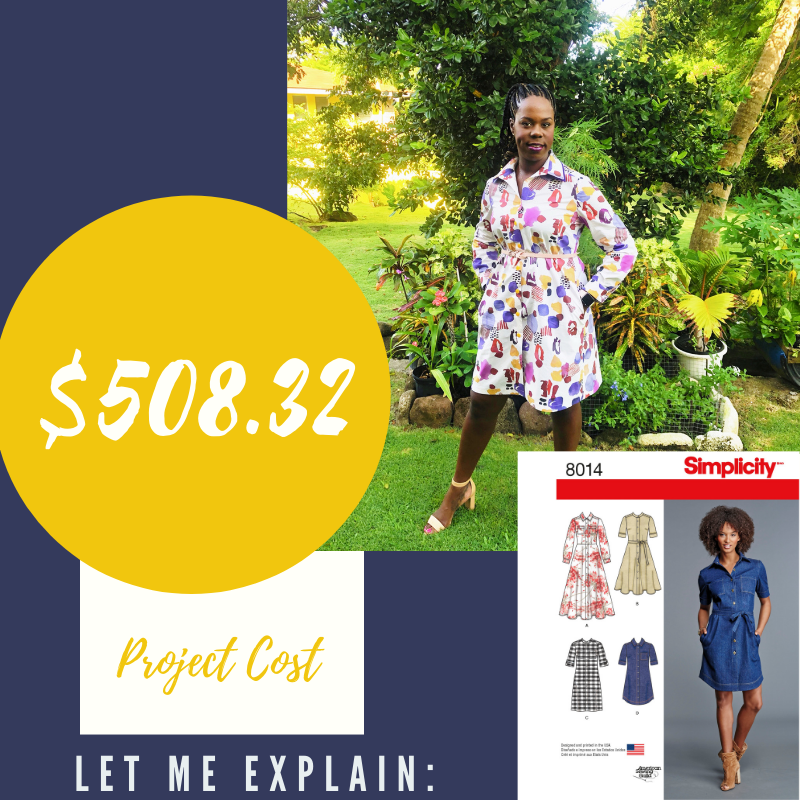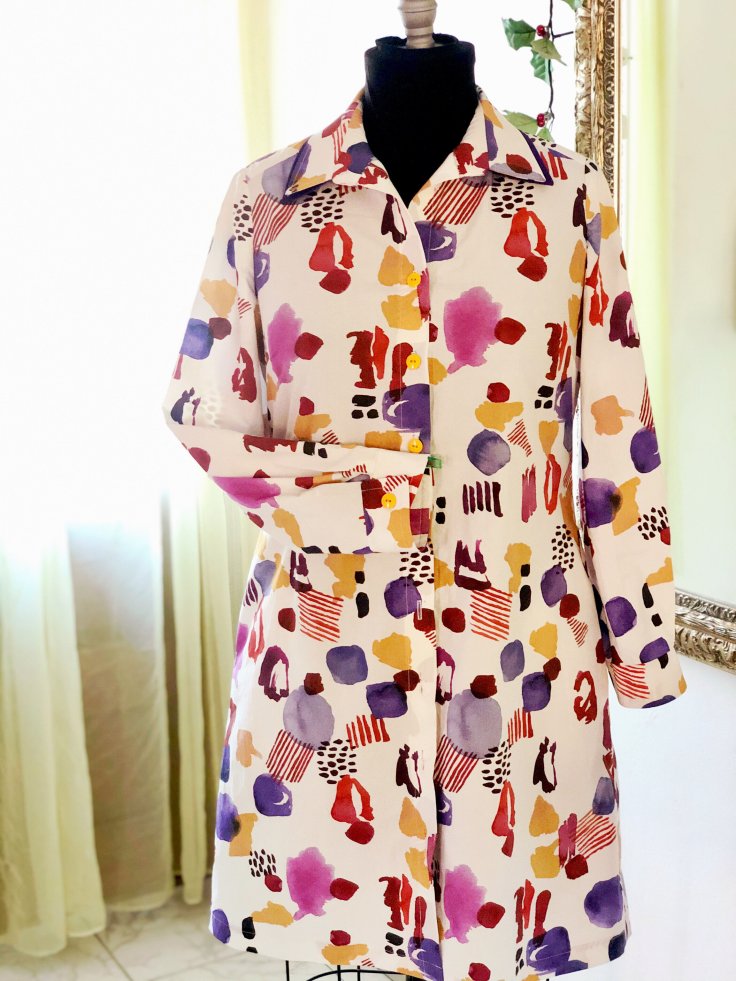Hey Y’all,
We have made it to the middle of the last week in October sooooo Happy Hump Day Folks! If that isn’t enough cause for celebration, indulge me for a minute whilst I wish my Sewl-sistah @sewstartino the Happiest of Birthdays!!!! Head over to her ‘gram and show her some love!
Now that that’s done, lemme tell ya, the lawyer in me is itching to come out and play today so I’m about to get allll up in your koolaid. Let me ask you:
-
who made your clothes?
-
where were they made?
-
how much did you pay for them?
-
how much are they valued?
Huh?
I have good reasons for asking. Jus trust me nuh! Keep reading…
You see, most of us wear what we buy; and buy what we like. Simple. I’ll tell you this, before I started sewing I had two considerations when clothes shopping:
-
did I like it and
-
could I afford it?
If the answer to both questions was ‘YES’, tell yaself I’d be adding another piece to an already crammed wardrobe. My purchases were not necessarily fueled by need, and I never stopped to think about who made my clothing, where they were made, under what conditions, and what the true value of the items ought to be, beyond their price tags. Tell me I’m not the only one!
Learning to sew has changed my perspective about clothing. So, let me keep things real with ya: the dimes you dropped on that shirt last week, probably does not reflect it’s true value! Why? Well, because fashion brands are mainly concerned with getting trending fashion into the consumer market as quickly and cheaply as possible. Their main aim is scoring big profits, even if their financial success is based on the exploitation of cheap labour in far-away places, and even if it means using inferior materials and overlooking poor workmanship. The theory behind it is that the cheaper an item, the more people will buy it; and more purchases means more money!
Tell me. Are you guilty of buying clothing that you K.N.E.W did not fit your body well, or that you’d probably only wear one time before shoving it to the back of your closet? How many times have you added an extra blouse or pant to your shopping cart because it was ‘cheap’? Come on now, be honest! I promise not to put you in jail! LOL
I recently came across an Instagram Post from @melt.stitches in which she broke down the cost of sewing a shirt she was making. This post inspired me to keep track of my latest sewing project. I wanted to get an idea of how much a handmade item of clothing could cost and thought it’d be fun to share it with you!
For the duration of this project, I kept a record of the time spent on particular sewing/sewing-related tasks, as well as the materials used. The pattern I chose, Simplicity 8014, offers 4 views. I opted to make view C with sleeves from View A, and hacked the pattern to include a double collar as the main feature. I traced a size 14 at the neck, blended to a size 16 at the bust and 18 at the hips, then made several adjustments to the pattern to improve on the fit.
Come pree my sewing time card … (and just so you know, I do not consider myself to be a fast sewer)!
Time card: #S8014
About the materials…
According to the pattern envelope, view C, in my size, called for 2 ¼ yards. Because I used the sleeves from view A (which are long sleeves with a continuous lap and cuff), and since I wanted a double collar I added another ½ yard to my fabric requirements bringing my fabric requirements to 2 ¾ yards. I did, however, purchase 3 yards of this fabric (to account for possible shrinkage). The pattern also called for 1 yard of interfacing and 14 buttons (12 for the dress; 2 for the sleeves) but I only used 10 buttons total.
Materials Calculation #S8014
It is noteworthy to mention that my calculation of material costs does not include any contribution to electricity and water (for sewing, ironing and laundering); neither does it include any pro-rated costs for the notions used (such as marking tools, pins, pressing tools, tracing paper and the like).
Calculating the ‘labour’ proved to be a little tricky, mainly since we do not have a minimum wage in Montserrat. A day labourer usually fetches about $150 pay. I divided this by 8 hours (being a standard work day) to get my base figure of $18.75 per hour.
As such, I calculated my labour cost as $18.75 x 14 1/4hours = $267.19
Now get your pencil and paper out and let’s work out the cost of this project!
Materials + Labour = Cost of this project
$241.13 + 267.19 equals… *drumroll please*
$508.32!!!!
[That’s approximately $188 USD or $145 Pound Sterling]
Pick ya jaw bone up off di floor and answer dis: would you willingly pay 500 bucks for this shirtdress? Most of you would probably say HELLLLLL NAH!, but why not? especially now you have seen all the figures!
Remember, a custom piece is (unlike with ready-to-wear) made to fit your body and built to suit your unique taste. I have control over every single garment I make: from the fabric I choose, to the thread color, closures, seam finishes, and most importantly, over the FIT on my less-than-perfect body! Shouldn’t that be valued?
So, back to my questions…
-
who made your clothes?
I did
-
where were they made?
In a tiny sewing spot inside my home
-
how much did you pay for them?
This particular dress – $241.13
-
how much are they valued?
For me, PRICELESS
Let me know your thoughts below!
Thanks for stopping by. Gotta luv ya and leave ya,
Until next time,
xoxo
Kris










Love this breakdown! Lots to think about here.
LikeLike
Thanks Chaela! Couldn’t have done it without ya!!!!
LikeLike
Love my clothes chic.. But cheap… Expensive look.. But cheap.. Can be accessoried in multiple ways but cheap… Oh yes and with a discount too😄😄.. Kudos on ur discipline to create your own clothing
LikeLike
LOOOOLLLL you never fail to crack me up! Lol. Who knew i could commit dwl!
LikeLike
From time to time an acquaintance will ask me to make them some article of clothing and they always look a bit startled when I immediately decline. I try to explain all of the things you wrote about here (I have a full time day job!) but they still don’t appreciate the full extent of the effort. Anyway, I really enjoyed reading this!
LikeLike
Thanks so much Kerry. I’m glad you enjoyed it. I am a full time worker and full time wife/mom which makes sewing for others even more unappealing. lol. We are in the same boat!
LikeLike
Educational and entertaining read. I agree its priceless. Love the fabric.
LikeLike
Thanks so much!!!
LikeLike
So interesting, I love this breakdown, and retail stores usually have a 200 – 500% markup so that even if they sell something at 50/60/70% off they still turning a profit. So imagine what little they paid for that cheap cute top you bought on sale for $10.
LikeLike
Thanks so much Tino! Thats my thought exactly. We smile when we see tops for 10 bucks because we think we are getting a good deal…but at what cost? and to whom?
LikeLike
I was so enthralled by the post I forgot about the shoutout. Thank you for the birthday wishes. ♥️
LikeLike
I really enjoyed reading this. I’m mainly a quilter. I sometimes dabble in garment construction, but it is so new to me that it’s painfully slow. Since I don’t know how to make adjustments for my body, not how to really interpret how the garment will hang on me, I have a number of "disappointments" that are only partially completed. I think paying someone who really knows how to make a garment fit the wearer would be money well spent.
LikeLike
Hi Kimmy thanks so much for stopping by! There is nothing wrong with painfully slow. We learn and grow at different rates! I’m a stickler for fit and am self taught but i’ve learnt a lot along the way about my body and how a garment should fit it. It takes time but you’ll get there! From time to time i share my alterations on my instagram stories. Maybe this will help you with your adjustments!
LikeLike